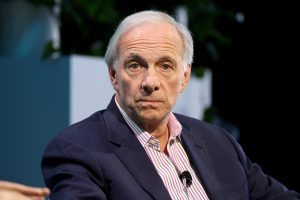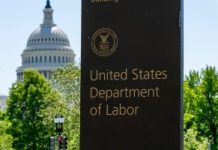
The stock market’s early rally fizzled by the afternoon, with the S&P 500 swinging from a nearly 2% gain to a slight selloff by midday. Nvidia, which initially jumped after reporting strong earnings, reversed 1% into the red along with the rest of the megacap AI trade.
The broader market mood wasn’t helped by mixed economic data and uncertainty around the Federal Reserve’s next move, especially after a cancelled jobs report and signs of uneven labor-market conditions. And then, there’s Ray Dalio.
The billionaire founder of Bridgewater Associates warned in a CNBC interview Thursday that investors are misreading the underlying mechanics of today’s rally, even as AI giants like Nvidia insist the boom is nowhere near finished.
“There is definitely a bubble in markets,” Dalio said, adding that while the situation doesn’t perfectly match 1929 or 1999, the indicators he tracks show the U.S. is closing in fast.
“The picture is pretty clear,” he said. “But we don’t have the pricking of the bubble yet.” And, crucially: “A lot can go up before the bubble bursts.”
Dalio’s comments landed just as Nvidia reported one of the most astonishing quarters in corporate history. The chipmaker announced a staggering $57 billion in revenue in the third quarter, up 22% from the prior quarter and 62% from a year earlier, and reaffirmed it has roughly $500 billion in AI-chip demand already lined up for the rest of 2025 and 2026. Data center revenue alone hit $51.2 billion, up 25% sequentially and 66% year-over-year, powered by “off the charts” demand for its new Blackwell GPUs. On top of that, Nvidia issued guidance of $65 billion in revenue next quarter, plus or minus 2%, signaling that its AI spend is nowhere near rolling over.
CEO Jensen Huang used the attention during his earnings call to dismiss bubble fears outright.
“We see something very different,” he told analysts, arguing that demand for AI compute isn’t tied to any single trend but three simultaneous revolutions: non-AI software shifting to accelerated computing, the explosion of new generative AI apps, and “agentic AI” that operates without user prompts.
But Dalio is looking past Nvidia’s fundamentals to what he sees as the fragile architecture of the broader market. In a lengthy essay released the same day on X, he argued that bubbles don’t burst simply because valuations are too high. They burst when investors suddenly need money to cover debts, taxes, or liquidity requirements, but are forced to sell assets to get it. That forced selling, not bad earnings or shifting sentiment, is what historically drives the cascade, Dalio argued.
“Financial wealth is of no value unless converted into money to spend,” he wrote.
Today, Dalio said, that vulnerability is amplified by extreme wealth concentration. The top 10% of Americans now hold nearly 90% of all equities, and they account for roughly half of all consumer spending. Their strength has masked the deterioration on the lower half of the income ladder, creating what economists widely describe as a K-shaped economy, one where high-income households surge ahead while everyone else slips further behind.
Moody’s Analytics chief economist Mark Zandi recently found that the wealthiest households are driving nearly all consumption growth, while lower-income Americans are pulling back under the pressure of tariffs, high borrowing costs, and rent inflation. Morgan Stanley Wealth CIO Lisa Shalett described the inequality as “completely wackadoo,” noting that spending among rich households is expanding six to seven times faster than for the lowest cohort. Even Federal Reserve Chair Jerome Powell acknowledged the divide, saying companies report “a bifurcated economy” where upper-income consumers continue to spend while others trade down.
It’s in this environment, Dalio argues, that bubble dynamics become especially dangerous. Margin debt is already at a record $1.2 trillion. California is considering a one-time 5% wealth tax on billionaires, exactly the kind of political shock that could force mass liquidations. Monetary tightening is another classic trigger.
“A tightening of monetary policy is classic,” Dalio said. “But also something like wealth taxes can happen.”
Still, Dalio isn’t telling investors to abandon the rally. Bubbles can keep rising far longer than skeptics expect, he said, and can deliver enormous gains before they crack. His message is simply that investors need to understand the risks, diversify, and hedge—he specifically cited gold, which has hit all-time highs this year—as markets move deeper into unfamiliar territory.
Both Dalio’s warning and Nvidia’s triumph acknowledge that markets are accelerating in ways traditional models struggle to explain. The AI boom may well keep lifting stocks. But the bubble mechanics Dalio outlines—easy credit, concentrated wealth, and vulnerability to liquidity shocks—are tightening, too.
As he put it: “I want to reiterate, a lot can go up before the bubble bursts.”
“These circumstances have, throughout history, led to great conflicts and great transitions of wealth,” Dalio wrote.










